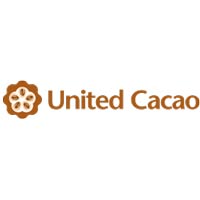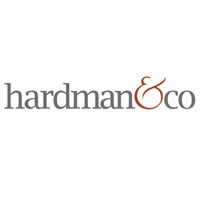United Cacao Limited SEZC (LON:CHOC) Chief Executive Officer Dennis Melka caught up with DirectorsTalk for an exclusive interview to discuss the current cacao market, their planting programme and the economics of the business at maturity
Q1: What’s the current state of the cacao market?
A1: It’s very exciting. I think this is a very unique commodity and we’re seeing some very interesting structural trends. To my knowledge, this is the first time in history that we have all three major producing countries, the world’s top three producer of cacao; Cote d’Ivoire, Ghana and Indonesia, in contraction. So Cote d’Ivoire a couple of weeks ago put out a press release that they expected this season which has just started, it’s the season that ends 30th September so this upcoming year, will be down approximately 150,000 tonnes. Ghana, as we know, had an incredibly disappointing harvest, down 25% and those 2 countries are facing an incredibly strong El Niño, from what we’ve spoken to people involved in the palm oil industry in West Africa, this is the driest it’s been in living memory. I think if this keeps going, this will clearly have a devastating impact on cacao production in West Africa for this coming season. In addition to that the world’s number 3 producer, Indonesia, announced that they would be lucky to get 350,000 tonnes this coming up year. So we have a situation where all 3 top producing countries are in contraction yet world demand for cacao i.e. confectionary sales continues to grow. If you look at the global confectionary sales, 50% of $120 billion a year is controlled by effectively 5 companies; you’re talking the Lindt’s of the world, the Hershey’s, the Mondelēz’s, all of these are recording healthy growth in sales, between 3-5% so we see demand rising and supply contracting. It’s an incredibly interesting situation, I think this will be hopefully an exciting year over the next 12 months as we see the production numbers come out of those countries.
Q2: Where is United Cacao in its planting programme?
A2: We gave an update to the market last month, we’re going to be hitting at approximately 2,000 hectares planted in early next year by the end of first quarter so that puts the project at about 2 thirds down so really I think we’re, every day, de-risking the company operationally. The market is in our favour and we continue to move forward with the pretty aggressive planting. Also our PAPEC programme, we expect to have over 500 hectares planted by the end of 2016 so that’s moving ahead very well at a strong pace. So we’re moving ahead on planting as quickly as we can but with the highest quality standards required.
Q3: Could you walk me through the economics of the business at maturity?
A3: I think this is something that, compared to other crops, is very simple for people to analyse and understand and there’s really only a couple of variables. First and foremost, what do you expect cacao price to be? So now we’re trading at $3,100 a tonne for cacao, that price has only produced deficits and shrinking supply, that price has not produced expanding supply. So I think when we look ahead 4-5 years as the business gets into a mature phase of production, I personally think it’s impossible to predict commodity prices and that’s why we position ourselves to be a low cost producer, irrespective of what the commodity price is. I think it would be realistic to assume that $3,000 where we are today is not going to be the price in 4, 5, 6 years’ time but let’s assume it is, let’s assume we’re all wrong and the price is flat for the next 5 years, so $3,000 a tonne, the question is how much cacao will we be producing per hectare of dried fermented beans which go into the container and then go around the world. Well, we’re using some very exciting varieties of the CCM 51 which is I would say the Toyota 4Runner of the industry, it’s only available in Peru and Ecuador, it’s not in Asia, it’s not in Africa, it’s disease-resistant, high yields and proven to get 2.5-3 times plus of cacao per hectare. We’re using our Sasha Gold variety, a fine flavour of cacao that has up to 4-5 times per hectare productivity. Let’s just assume we get 3 times, which again I think is not being terribly optimistic, I think it’s very achievable and others are already doing that, so at $3,000 a tonne with 3 tonnes of cacao, we’re doing $9,000 of revenue per hectare. Cost per hectare in this industry if you’re a top cacao producer and you’re doing a good job, will be about $2,500 per hectare of cost, that’s roughly one third labour, one third fertiliser, one third everything else; transportation, fermentation. In that scenario, if we were doing $9,500 in revenue and costs were about $2,500 per hectare, we would be clearing over $6,500 of cash flow/net income because there’s no tax in Peru for cacao, there’s no corporate income tax, there’s no sales tax, there’s no VAT, no tax of any kind so that gives us, in that scenario, a potential to be doing $6,500 of net income per hectare. Obviously if price was $5,000 per tonne for cacao, you can do the math, that mainly falls all to the bottom line. We think we’re a very exciting industry, we have a big first mover advantage, we have a phenomenal team on the ground, we’re in the world’s best location to grow cacao and the project is two thirds done by early next year. Now maturity will take several more years and we don’t expect to hit full maturity until 2021/2022 but we are producing cacao, we expect by the end of next year and then ramping up those volumes until we hit maturity in 2021/2022. It’s important to note that those trees will be mature for a period of anything between 30-40 plus years so it’s a great business, we’re rapidly de-risking the business every day as we move forward, our planting goals and the commodity price looks good for us so we think we’re got a good 12 months ahead and should be quite interesting.



